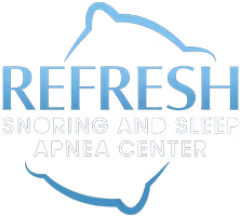Temporomandibular joint disorder (TMD), often referred to as TMJ, is a common but often misunderstood condition. It affects the joints and muscles that control jaw movement—causing discomfort, tension, and even headaches that interfere with daily life.
While traditional treatments like oral splints or physical therapy remain helpful, many people don’t realize that Botox, yes, the same injectable used to reduce wrinkles can offer relief from TMJ-related symptoms in a minimally invasive way.
Let’s explore how Botox for TMJ works, what you can expect, and whether this treatment may be right for you.
Key Takeaways
- Botox can help reduce jaw tension, clenching, and pain associated with TMD.
- It works by gently relaxing overactive muscles that contribute to TMJ discomfort and headaches.
- Treatment is quick, non-surgical, and results typically last 3–4 months.
- Botox is often used in conjunction with other therapies for comprehensive care.
- Refreshed Sleep offers supportive, customized treatment options for TMJ in the Denver area.
Understanding TMD and Jaw Pain
The temporomandibular joint (TMJ) connects your jawbone to your skull and allows you to chew, speak, and yawn. When this joint or its surrounding muscles become overworked or inflamed, the result is TMD—a condition that can cause:
- Jaw soreness or pain
- Clicking or popping sounds when chewing
- Difficulty opening or closing the mouth
- Headaches, especially in the temples
- Nighttime clenching or grinding (bruxism)
- Neck, shoulder, or facial tension
For some, the symptoms are mild and resolve with stress management or jaw rest. But for others, the pain becomes persistent and affects quality of life.
How Botox Helps Treat TMJ
Botulinum toxin (Botox) works by temporarily blocking signals between nerves and muscles. In the context of TMD, this means that overactive jaw muscles—particularly the masseter and temporalis—can be gently relaxed without limiting basic functions like speaking or eating.
According to a study published in the Journal of Headache and Pain, Botox injections in key jaw muscles can significantly reduce:
- Jaw tension
- Clenching intensity
- Frequency of TMJ-related headaches
The procedure itself typically takes only 10–15 minutes, with no anesthesia needed. Most people start noticing improvement within a week, with peak results at around 2–3 weeks.
What to Expect After Botox Treatment for TMJ
Botox is considered a low-risk, non-surgical option for TMD care. Here’s what you can expect:
- Little to no downtime – You can return to normal activities immediately.
- Gradual relief – Symptoms improve as muscle activity decreases.
- Temporary effects – Results last 3–4 months on average.
- Repeatable – Botox can be safely administered several times per year.
While Botox isn’t a cure for TMD, it can break the cycle of pain and tension—especially when used alongside other treatments like physical therapy, bite appliances, or oral appliance therapy.
Botox vs. Traditional TMD Therapies
Many people begin with oral splints or nightguards, which can help protect the teeth and reduce grinding. Others explore physical therapy, dietary adjustments, or anti-inflammatory medications.
But for those who don’t find relief—or who want to avoid medications or surgery—Botox offers a gentler approach that can reduce symptoms without long-term commitment or recovery.
It's also been shown to improve compliance with other therapies by lowering the muscle tension that makes splints or guards uncomfortable
Is Botox Right for You?
Botox may be a good fit if you:
- Experience chronic jaw tension, headaches, or clenching
- Have not responded well to other conservative treatments
- Want to avoid surgery or long-term medication use
- Grind your teeth at night, despite using a mouthguard
- Are looking for a safe, temporary solution while exploring other options
At Refreshed Sleep, we take a collaborative approach to jaw pain. If Botox seems appropriate, we’ll help guide you through every step—from evaluation to treatment to follow-up.
FAQs About Botox for TMJ
1. How does Botox treat TMD?
Botox relaxes the jaw muscles that are overactive or tense, helping to relieve pressure and reduce pain from clenching, grinding, or inflammation.
2. What is the success rate for Botox in treating TMJ?
Clinical studies suggest high patient satisfaction and symptom relief, particularly when Botox is used as part of a broader treatment plan. Results may vary based on severity and coexisting conditions.
3. How long do the effects of Botox for TMJ last?
Typically, 3–4 months. Some patients experience longer relief depending on their response and lifestyle.
4. Does Botox affect chewing or speech?
No. When administered correctly, Botox only weakens targeted muscles slightly—it won’t prevent normal jaw function.
5. Where can I get Botox for TMJ near Denver?
We provide TMD evaluations and treatment at our Castle Rock location. Contact us today to learn more.
Gentle Relief That Fits Your Life
TMJ-related pain can be frustrating and disruptive—but it doesn’t have to define your days. Botox offers a minimally invasive, low-risk treatment option that can ease jaw tension, headaches, and clenching in a way that fits into your lifestyle.
At Refreshed Sleep, we understand that every case of TMD is personal. If you're looking for a solution that balances comfort, convenience, and results, Botox may be worth exploring.
Get started with a consultation or call our Castle Rock office at 303-688-6630.

.svg)




